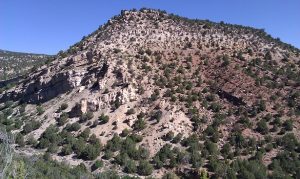Why is learning Structural Geology so beneficial to all geologists?
Structural Geology focuses on the processes and results of crustal deformation on Earth, and this deformation forms some of the most amazing brittle and ductile structures, such as faults, joints, veins, folds, and shear zones. Therefore, GEOL 313 is designed as an upper level course in the Geology major (required) or minor (elective). I am assuming that everyone has already taken GEOL 200 (Processes and Concepts of Geology), which is a prerequisite for the course. Students who have also had several other 200- and 300-level courses are typically more prepared for GEOL 313, because they will be already familiar with some of the vocabulary. Course lectures are complemented with a weekly lab, which forms the basis for much of the hands-on content of GEOL 313. The lab component of GEOL 313 is especially important, because it provides students with the skills needed in structural geology.
Studying Structural Geology is valuable to your overall geologic education for several important reasons. First, this subdiscipline of geology has great practical value. Structures on Earth control some of our most basic needs and some of our mining necessities, such as the flow of water and pollutants in the subsurface to the geographic location of our economic ore and oil/gas deposits. Second, Structural Geology requires you to constantly think in 3-D. And, while this skill can be difficult to master at first, you will improve upon your ability to think in 3-D during the semester in GEOL 313. Thinking in 3-D can help you in all other aspects of geology — whether you are interested in dendrochronology, paleontology, sedimentology-stratigraphy, volcanology, etc. Finally, Structural Geology focuses on some of the world’s most majestic mountain belts, which have captured our attention as places of beauty and as archives into Earth’s geologic history.
 View of the Rock and Dry Monocline, central Utah. The Jurassic Twist Gulch Formation (red unit on right) is backthrust into the Paleogene Flagstaff Limestone (cliff-formers on left), which is folded into its monoclinal shape.
View of the Rock and Dry Monocline, central Utah. The Jurassic Twist Gulch Formation (red unit on right) is backthrust into the Paleogene Flagstaff Limestone (cliff-formers on left), which is folded into its monoclinal shape.
